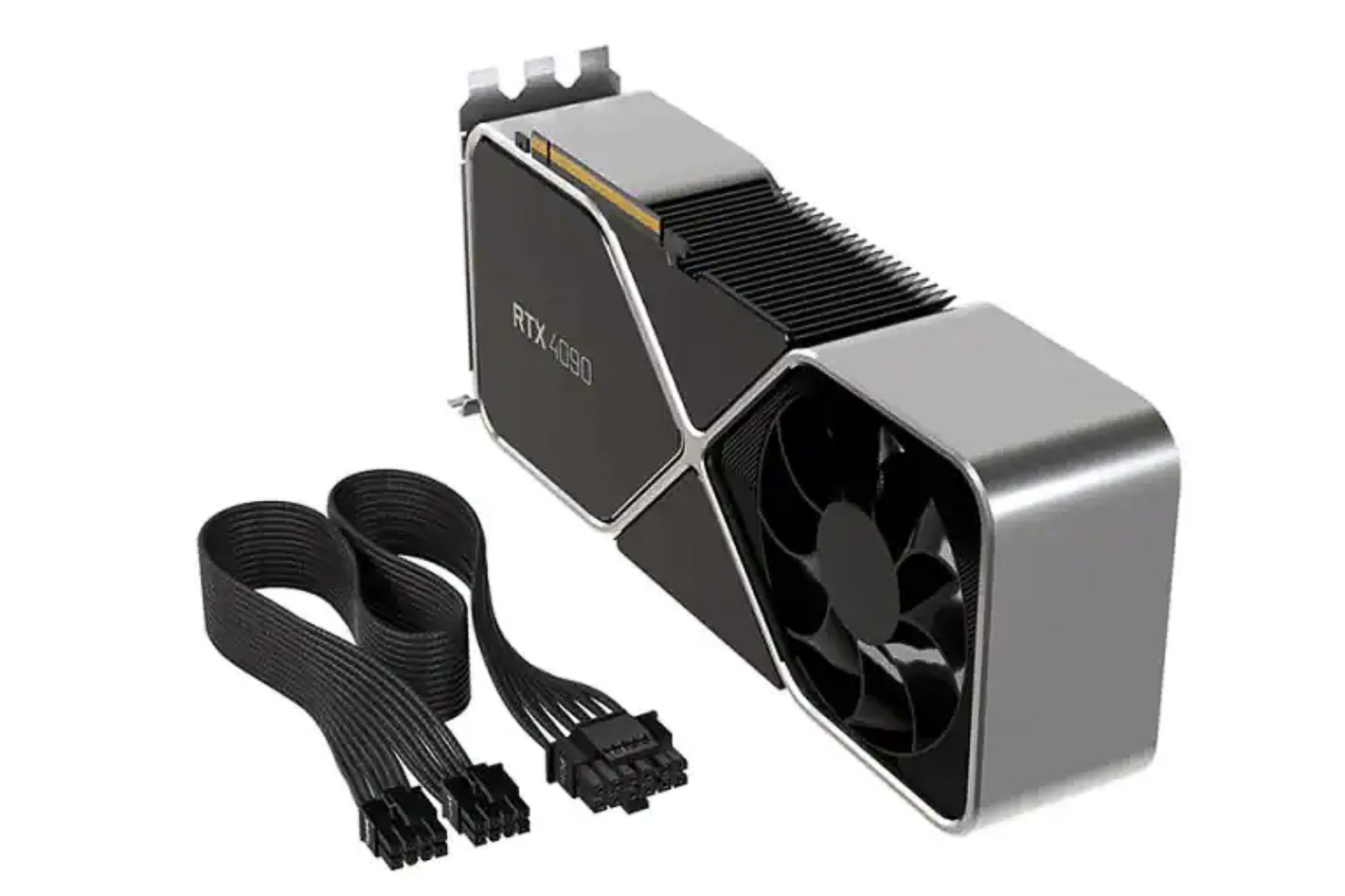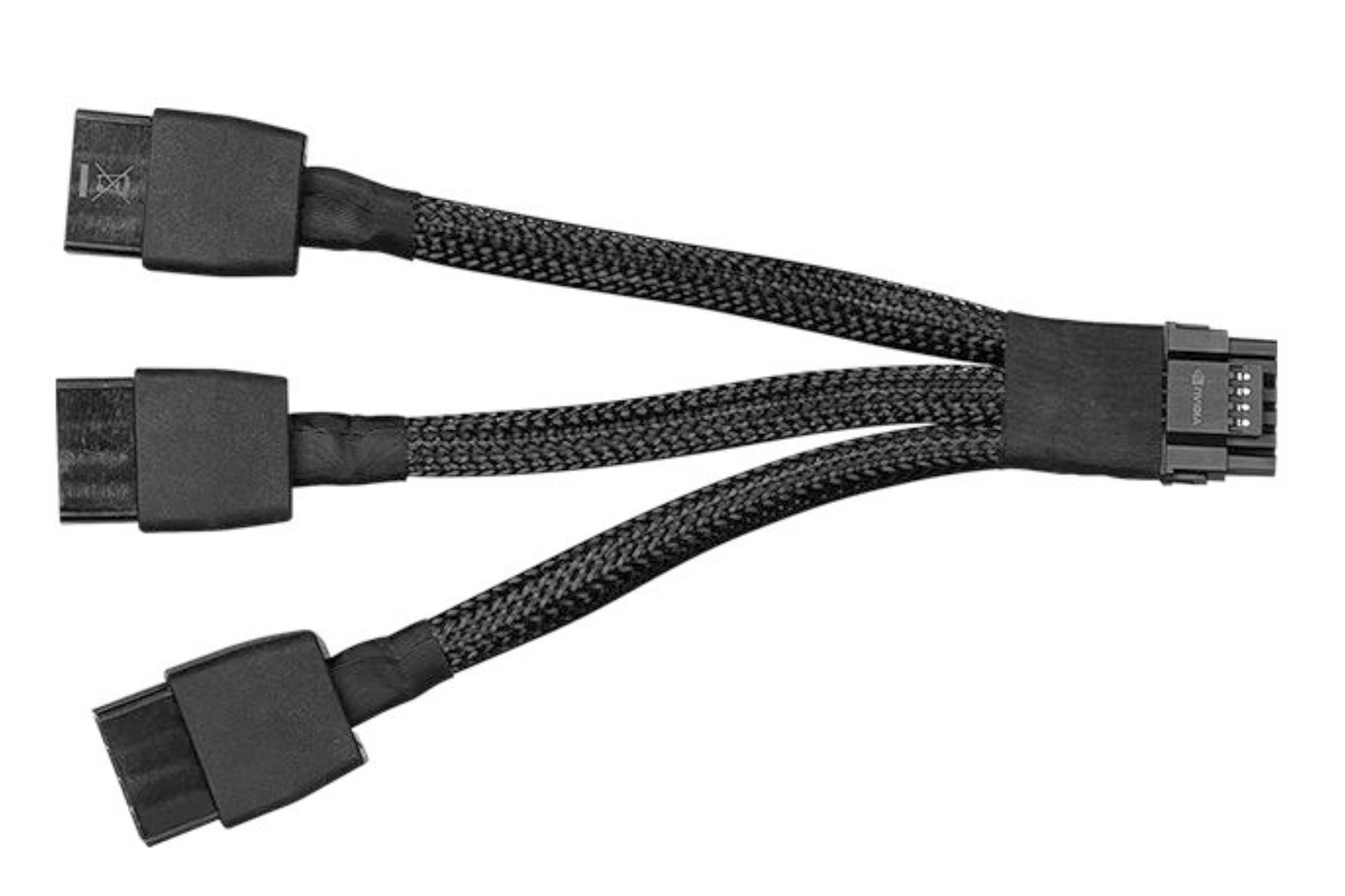 Corsair announced in September a new 12+4 pin 12VHPWR power connector that should make connecting a PSU to a RTX 40 series card easy. The problem is to find the cable, which is “out of stock”.
Corsair announced in September a new 12+4 pin 12VHPWR power connector that should make connecting a PSU to a RTX 40 series card easy. The problem is to find the cable, which is “out of stock”.
The stories about power cables burning with the NVIDIA RTX 4090 graphics cards made September and October “hot” months online, with people claiming NVIDIA was responsible, to which the company replied, in November, this: “Our findings to date suggest that a common issue is that connectors are not fully plugged into the graphics card. To help ensure the connector is secure we recommend plugging the power dongle into the graphics card first to ensure it’s firmly and evenly plugged in, before plugging the graphics card into the motherboard.”
 With so many news going round of burning, and melting of cables and cards, the website Gamers Nexus made an extensive investigation into the matter and reached a conclusion: there are three reasons for the failures documented. In fact, they do admit that there may be more but the three (or 2+1) most common were easy to pinpoint: potential design flaws, foreign object debris in manufacturing and user error. The appearance of debris, Gamers Nexus notes, “seems uncommon” but is a cause, and that was true for both adapter cables and unadapted ones.
With so many news going round of burning, and melting of cables and cards, the website Gamers Nexus made an extensive investigation into the matter and reached a conclusion: there are three reasons for the failures documented. In fact, they do admit that there may be more but the three (or 2+1) most common were easy to pinpoint: potential design flaws, foreign object debris in manufacturing and user error. The appearance of debris, Gamers Nexus notes, “seems uncommon” but is a cause, and that was true for both adapter cables and unadapted ones.
User error seating the cable may be, it appears, a key reason. That’s the reason why Gamers Nexus notes that on the user error front one thing should always be remembered: even if your cable doesn’t start fully unseated and is only partly unseated, it can work its way loose over time if you move cables around, do some cleanup, move the system, and that may lead to a problem.
 User error and small PC cases
User error and small PC cases
This is true with the adapters that allow users to connect three different PCI-E cables from their PSU to the 12VHPWR / PCIe 5.0 power connector on the side of these graphics cards, which is part of the upcoming ATX 3.0 power supply specification and the reason why NVIDIA changed the connectors with this series. The final video from Gamers Nexus (November 16) about the problem, which we suggest ProVideo Coalition readers watch, shows what’s really happening and points that failure can happen with any cable or adapter.

Now, one thing Gamers Nexus says is that users should also be aware of cables, or adapters that even if properly seated are at an angle, as that may create more problems. That’s something I felt could happen when I built a recent machine around a RTX 4090. I wrote, then that owners of slim cases may have a problem, as connecting the cables to the RTX 4090 card with an adapter creates an extra length of the cable that needs larger space inside the case. Even if I could fit the RTX 4090 inside my Corsair Carbide 300R case, I would not be able to connect the cable as the width of the case is not enough to fit the cable and adapter. In fact, even on my new LIAN LI LANCOOL III case the cable is almost touching the glass windowpane.
While the RTX 4090 uses a new 12+4 pin 12VHPWR power connector, all cards ship with a PCI-e 8-pin power to 12VHPWR adapter. I am using in my new PC build, about which I’ve written here at PVC before, the adapter that came with my MSI RTX 4090, to which I connect three PCI-e cables coming from the PSU, but what I really would like to have is a cable that does not need any adapter, and because my PSU is from Corsair, I looked at the official CORSAIR 12VHPWR 600W cable compatible with all CORSAIR type-4 PSUs, that was announced last September.
 CORSAIR’s official cable is MIA
CORSAIR’s official cable is MIA
This cable connects directly to the PSU via the existing PSU-side connectors for unfettered power straight for your new graphics card – no PCIe adapter required. With sense-wires configured to 600W, your graphics card will know it’s able to draw its maximum power load, says Corsair, adding that “there’s no need to wait for future PSUs to support Intel’s new ATX 3.0 standard and CORSAIR’s power supplies already provide the needed reliability and quality components to support the higher power needs of the next generation of PC hardware. Whether it’s an RM1000 that’s seen many builds, or a brand new HX1500i, you can depend on your CORSAIR PSU to power your graphics cards into the future.”


According to Corsair, a graphics card like the RTX 4090 requires an 850W CORSAIR PSU or higher. RTX 4080 graphics cards require a 750W CORSAIR PSU or higher. To confirm if your PSU is compatible with the CORSAIR 12VHPWR 600W PSU cable, check the compatibility chart available at Corsair’s website. Be warned, though: the chart is not easy to decipher!

My problem, though, is that the official CORSAIR 12VHPWR 600W cable is nowhere to be seen. It’s constantly “out of stock”, despite the company saying, early September, “that the cable is available to order immediately from the CORSAIR webstore. Orders will ship beginning September 29th.” It’s hard to find in USA and over here, in Europe, it’s even more difficult than it was to buy a RTX 30-series a couple of years ago. A supplier I asked about the availability timing for the cable, because they’ve a note “out of stock” on their website, told me that they expect to have the cable in March, hopefully. Why announce a cable if it’s not going to be available?

Filmtools
Filmmakers go-to destination for pre-production, production & post production equipment!
Shop Now













